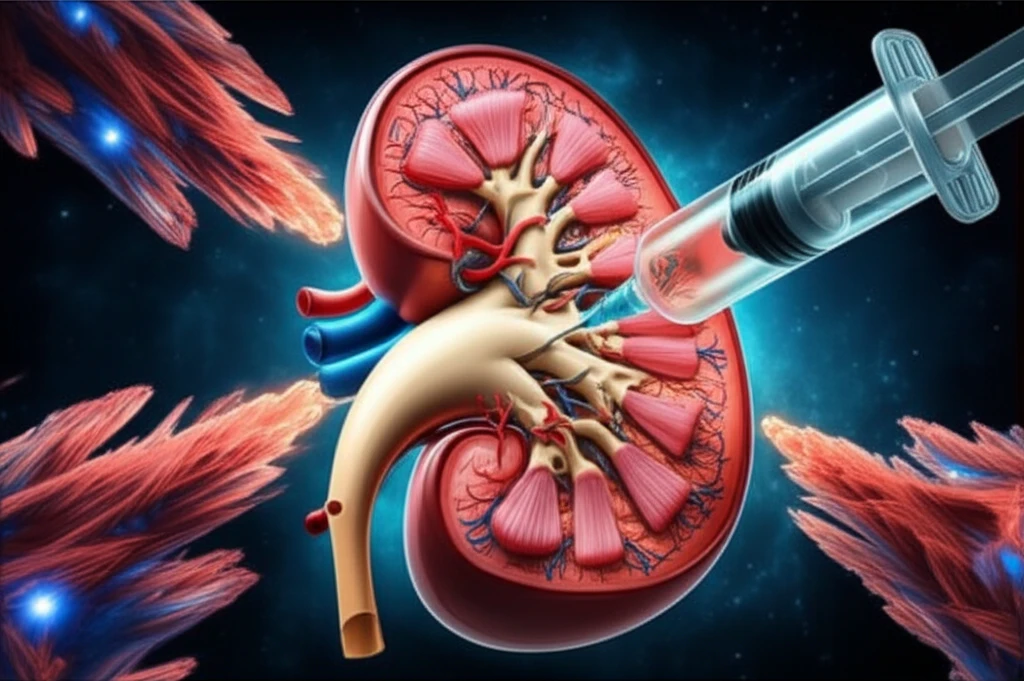
Heroin's Hidden Danger: How Injection Drug Use Can Lead to AA Amyloidosis
"A case report reveals the link between heroin use, recurrent infections, and a rare kidney disease. Learn how to protect yourself and loved ones."
The opioid crisis continues to grip communities, leading to a surge in heroin use. While overdoses are often the primary concern, injection drug use carries a host of other potentially devastating complications. Among these less-publicized risks is secondary amyloidosis (AA), a rare but serious condition that can lead to kidney failure and other life-threatening problems.
AA amyloidosis occurs when the body produces an excess of serum amyloid A (SAA) protein in response to chronic inflammation. This protein then deposits in organs, primarily the kidneys, disrupting their normal function. While traditionally associated with autoimmune diseases, chronic infections stemming from injection drug use are increasingly recognized as a significant trigger.
This article delves into a recent case report highlighting the connection between heroin use, recurrent infections, and the development of AA amyloidosis. By understanding the risks and recognizing the warning signs, individuals and healthcare providers can take proactive steps to protect vulnerable populations.
The Case: A Woman's Battle with Heroin and Kidney Disease

A 49-year-old woman with a history of polysubstance use, including heroin and methamphetamine, was admitted to the emergency room with recurring fevers and severe hip pain. Her medical history was significant for recurrent skin abscesses, spinal disc infection (diskitis), and septic thrombophlebitis – all complications linked to injection drug use.
- Chronic Osteomyelitis: Examination revealed chronic osteomyelitis (bone infection) in her right hip.
- Acute Renal Failure: She was also experiencing acute renal failure, indicated by high levels of protein in her urine (nephrotic range proteinuria).
- AA Amyloidosis Diagnosis: A kidney biopsy confirmed the presence of both acute tubular necrosis (kidney cell damage) and secondary AA amyloidosis. The biopsy showed classic signs of amyloid deposits, including an apple-green birefringence under polarized light and a positive immunohistochemical stain for serum amyloid A protein.
Preventing AA Amyloidosis: A Call for Action
The increasing incidence of AA amyloidosis related to injection drug use underscores the urgent need for a multi-pronged approach:<ul><li><b>Harm Reduction Strategies:</b> Implementing and expanding harm reduction programs, including safe injection sites and needle exchange programs, can reduce the risk of infections.</li><li><b>Addiction Treatment:</b> Providing accessible and affordable addiction treatment, including medication-assisted treatment, can help individuals break free from the cycle of drug use and its associated health risks.</li><li><b>Public Health Policies:</b> Enacting policies that address the root causes of the opioid crisis, such as over-prescription of painkillers and lack of access to mental health care, is crucial for long-term prevention.</li></ul><br>By addressing the underlying issues driving injection drug use and implementing effective prevention strategies, we can reduce the risk of AA amyloidosis and other devastating health consequences. Early detection and treatment of infections are also key in preventing the progression to AA amyloidosis. If you or someone you know is struggling with addiction, please seek help.
